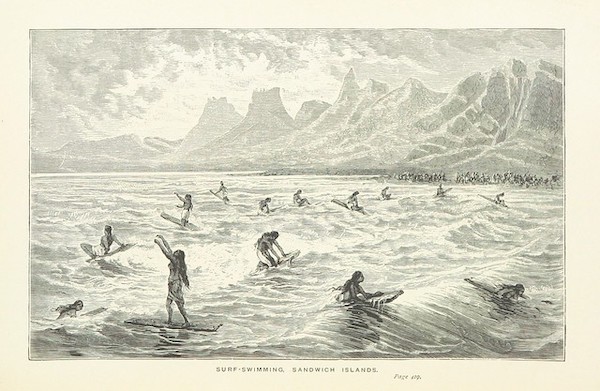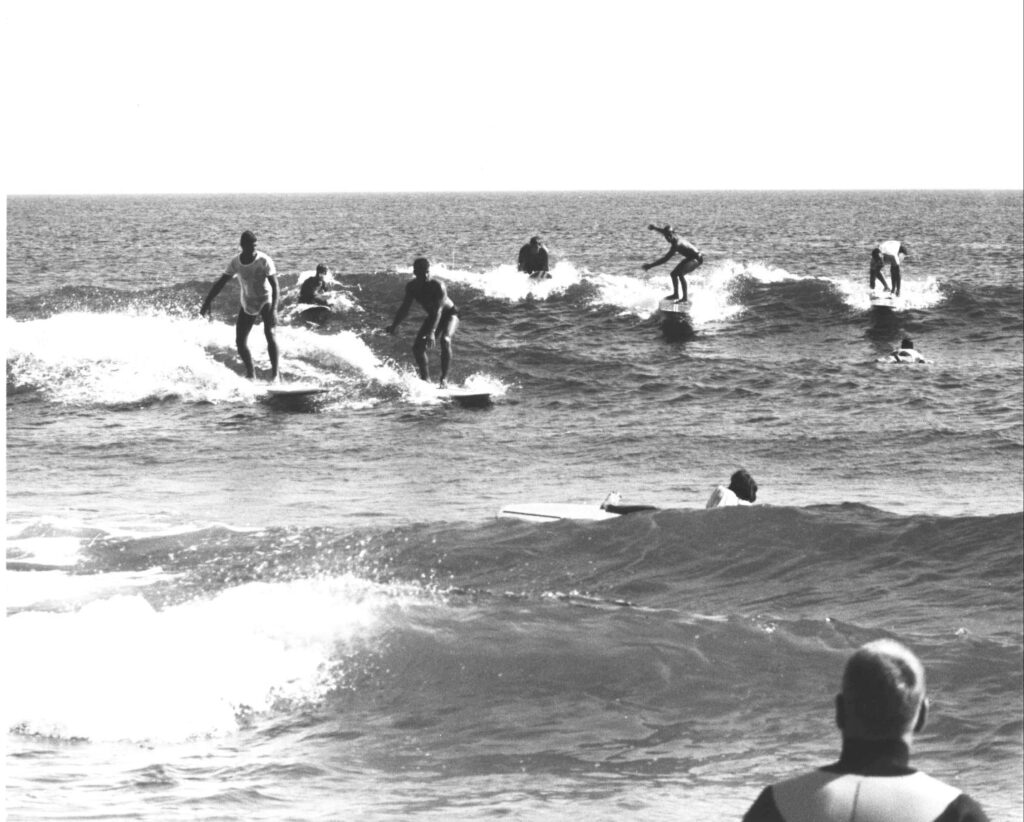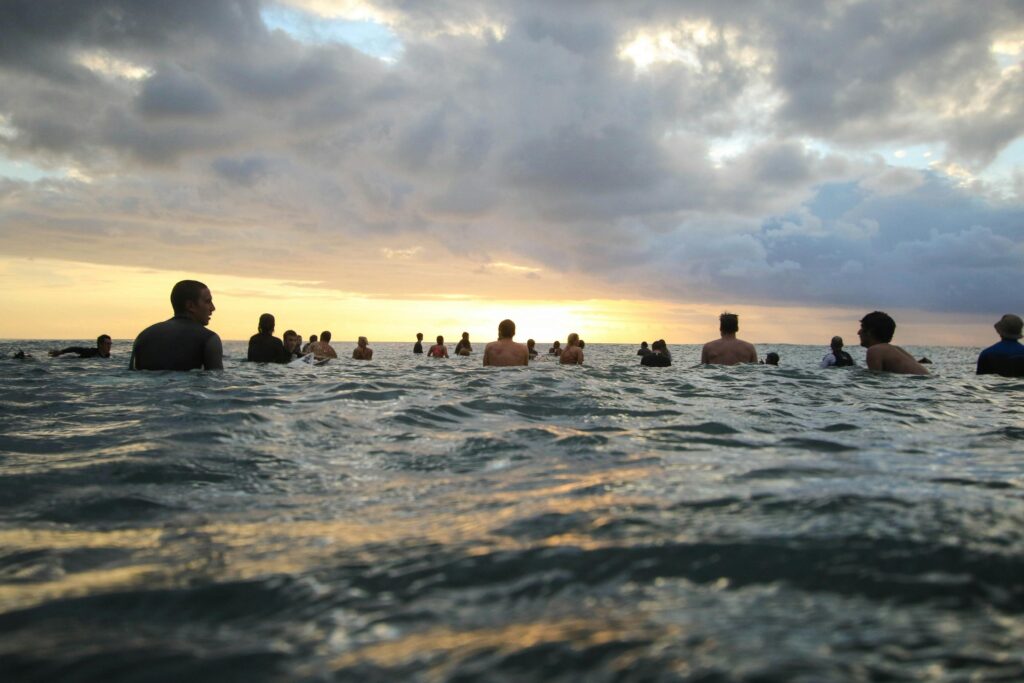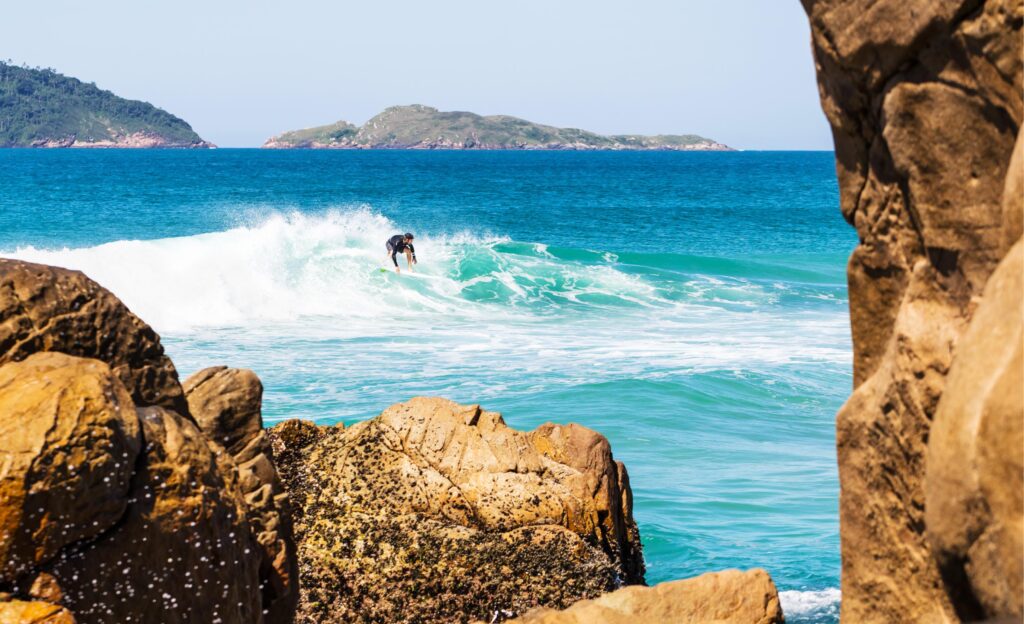Surfing isn’t simply a form of recreation. It’s an entire way of life, a phenomenon of culture that has formed communities, inspired art, and brought people closer to the sea for ages.
From its earliest roots in the ancient world of Polynesia to its current incarnation as a global culture, surfing has seen an incredible transformation.
What brought us to where we are today?
What does the future bring for this ever-changing universe of waves?
In this piece, we’ll examine the fascinating history of surfing culture, its development, and the current fashions.
Suppose you’re an experienced surfer, an aspiring beginner, or just awed by the intersection between sports and art.
In that case, this dive will give you an entirely new perspective on surfer waves and how they have formed our society.
The Sacred Roots: Surfing in Ancient Polynesia
Before surfing became a worldwide phenomenon, the sport was a religious practice embedded in the culture of ancient Polynesia.
Surfing was more than a leisure activity for the people who lived in indigenous Hawaii.
The spiritual action brought them closer to the sea, gods, and their communities.
The first surfers traveled on wooden boards cut by local trees. They were frequently doing rituals to honor the ocean and seek its blessings.
Commoners and chiefs participated in the sport, but the most potent waves were typically reserved for those considered elite.
Surfing was a method to display skill, courage, and respect for the natural world and played an important role in both religious and social rituals.
But, after the advent of European missionaries during the 19th Century, surfing faced extinction.
The missionaries considered the practice immoral and frivolous, which led to its demise.
It wasn’t until the early 20th Century that surfing began to return through the efforts of a handful of Hawaiian pioneers who fought to keep the tradition alive.

The Golden Age: Surfing’s Rise in the 20th Century
The 20th Century was the beginning of the modern age of surfing, and the sport grew across Hawaii and caught the interest of people all over the globe.
The period is often called”the “Golden Age of Surfing,” which witnessed the rise of famous surfers such as Duke Kahanamoku, who introduced surfing to Australia and the United States, and the advancement of lighter and more agile surfboards.
The 50s and the 1960s marked the era of cultural revolution, and surfing was an emblem of freedom, rebellion, and even counterculture.
Films like Gidget and The Endless Summer brought surfing into the mainstream, and artists like The Beach Boys celebrated the surfing lifestyle in their music.
Magazines, shops for surfing, and contests began popping up in the market, creating an enviable business based on the sport.
However, it wasn’t just about the sport itself. Surf culture was a way of life.
Surfers adopted a relaxed lifestyle and attitude and valued spending time on the water over the traditional social norms.
This attitude was embraced by a generation looking for freedom from the stress of post-war society, and surfing exploded into a global phenomenon.

The Commercial Wave: The Transformation of Surfing into an International Industry
When surfing became popular during the 1970s and 1980s, and the 1980s, it began to transition from a counterculture movement into a commercial powerhouse.
Brands such as Quiksilver, Billabong, and Rip Curl popped up, transforming surfing into a global fashion trend.
Surfing wasn’t just an exercise but a way of life; everyone wanted to own a piece.
It was also the time when competitive surfing grew this period, which led to the formation of organizations such as the International Surfing Association (ISA) and the Association of Surfing Professionals (ASP).
Surfers such as Kelly Slater and Lisa Andersen were famous and pushed the limits of what could be done on a board, creating a new generation of athletes.
However, this commercialization was not without its problems. When surfing became more popular, certain people believed it had lost its essence.
The simple sport of riding waves was now entangled with sponsorships, endorsements, and corporate interest.
Despite this change, the fundamental nature of surfing–the connection with waves and desire to stoke unaltered.

Modern Surf Culture: A Blend of Tradition and Innovation
Today’s surf culture is a lively blend of both traditional and modern. On the other side, there’s an increased fascination with the origins of surfing.
More surfers are taking up traditional techniques such as hand-shaping boards and recognizing that the sea is sacred.
Technological advancements and globalization have changed surfing in ways that were impossible a few decades back.
Wave pools have revolutionized the way people surf and where they go.
Companies such as Kelly Slater’s Wave Co. and Surf Lakes are creating perfect artificial waves that make surfing more accessible to those who live away from the ocean.
In addition, advances in the design of surfboard technology, wetsuits, and prediction tools make finding an ideal wave simpler than ever before.
Social media also has a significant impact on shaping the current surf culture.
Platforms such as Instagram or YouTube have created a new wave of surfers who post their surfing adventures to millions of fans.
While this has helped to make surfing more accessible, it’s also resulted in overcrowding at popular surfing spots and has caused concerns over the environmental impact.

The Future of Surf Culture: Riding the Next Wave
In the future, surfing culture will have both challenges and opportunities.
Environmental pollution, climate change, and overdevelopment are threatening the oceans and coastlines around the globe, forcing surfers to become advocates for protecting our environment.
Groups like the Surfrider Foundation and Sustainable Surf are at the forefront of promoting initiatives such as beach cleanups, non-plastic surfing, and carbon-neutral events.
In the same way, surfing’s inclusion in the 2020 Tokyo Olympics brought about a brand novel chapter for the history of surfing.
By making surfing accessible to the worldwide public, The Olympics could invigorate a new generation of surfers and broaden the sport.
The most thrilling aspect of the future of surf culture is its capacity to adapt and grow.
This could result from the rise of adaptive surfing, especially for people with disabilities, the rising popularity of women’s surf, or the discovery of new frontiers like big-wave or tow-in surfing. There are a myriad of possibilities.

Conclusion: The Eternal Stoke of Surf Culture
The surfing culture is a living and breathing thing that has endured the rigors of change while adhering to its fundamental values.
From its origins as a sacred sport in the ancient world of Polynesia to its current incarnation as a worldwide phenomenon, surfing has always been about more than just surfing waves.
It’s about connecting to the sea, one another, and to something larger beyond us.
While we surf the oceans of the future, remember to celebrate the past, guard the present, and be open to the endless possibilities ahead.
Whether you’re a professional or just a newbie, there’s a place for you in the constantly evolving surfing world.
Grab your board, hit the waves, and begin your adventure. The ocean is calling.



